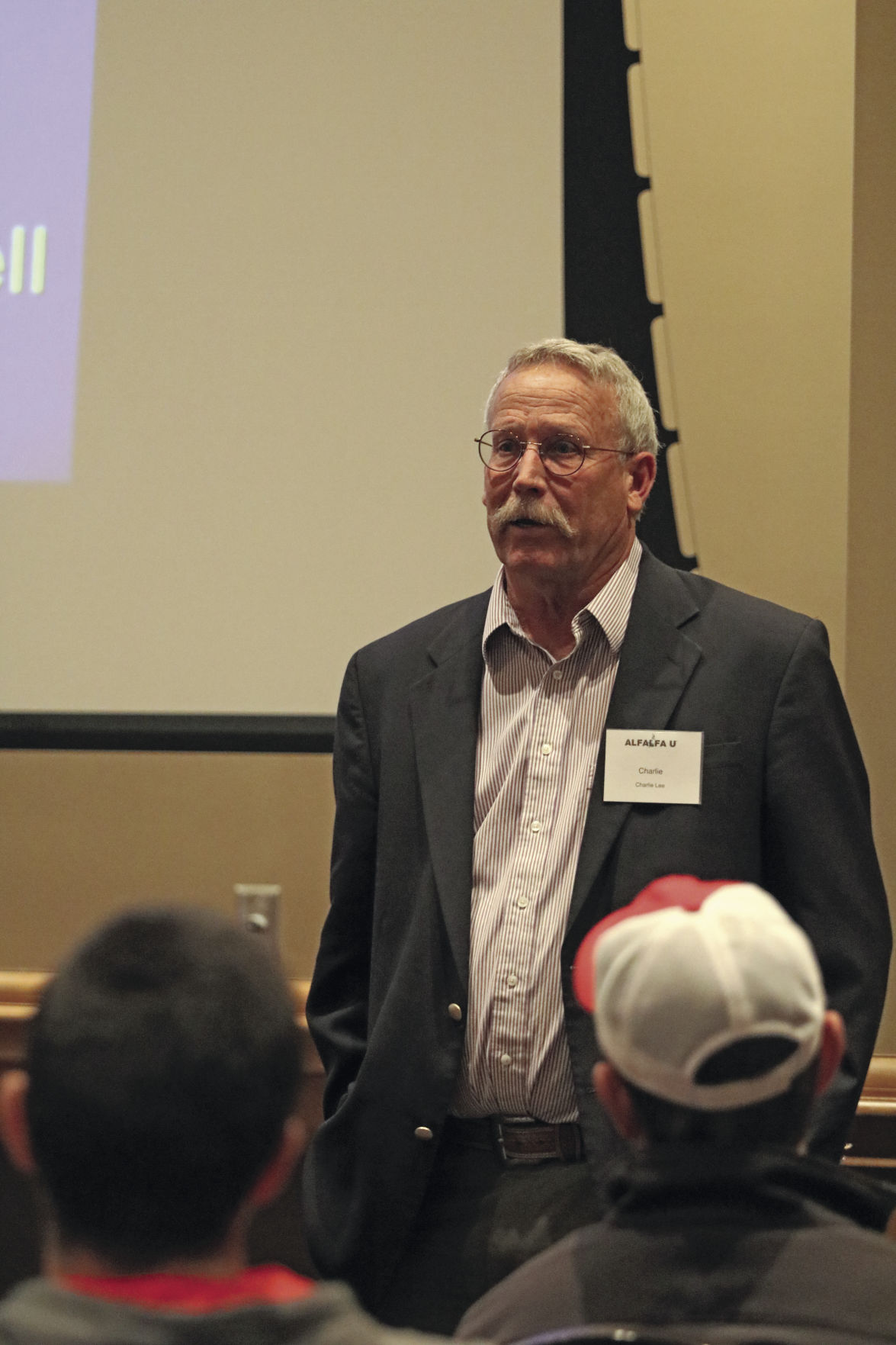Rodent identification essential for treatment in alfalfa fields

Kansas State University Extension wildlife control specialist Charles Lee said it’s important to know what kind of rodents are digging holes in alfalfa fields to see if there is a way of controlling them.
Lee spoke at the Alfalfa U Event in Dodge City, Kansas. Alfalfa U, a High Plains Journal event, is sponsored by Alforex Seeds and John Deere.
One such pest, pocket gophers, live across the state of Kansas, with the exception of the extreme southeast corner of the state.
“It is important to know we’re dealing with pocket gophers,” Lee said. “They’re not moles. It’s not prairie dogs or ground squirrels, or prairie voles.”
Burrowing rodents dig into the soil and only come out on top of the ground while it’s turning around and burrowing. Pocket gophers dig through the soil easily and normally about six to eight can be found in an acre of land.
“Most of its life is spent below ground,” Lee said.
They tend to be not nearly as prolific as some other rodents and become sexually mature in a year.
“Seven years is the longest it’s been noted living in wild,” Lee said. “Typically it’s much less than that.”
Pocket gophers are very territorial, he said, and can have about 700 square yards of real estate. Typically the burrows can’t be collapsed when walked upon as they’re only about the diameter of a tennis ball. Depending on the soil type and moisture, they burrow 6 to 8 inches below the soil surface.
“They can do 500 feet of burrow system they maintain. Pretty extensive really at two or, sometimes, three different depths,” Lee said.
When eating, pocket gophers clip off vegetation and stuff it in their cheek pouches. They then carry it to one of the side chambers in their burrow system to store it to eat later.
They feed on plants in a variety of ways, Lee said—on roots as they’re digging through the soil; feeding when they come above ground; and pulling vegetation into the tunnel from above.
“Their favorite food seems to be alfalfa and dandelions,” Lee said.
Diggers by trade
Throughout their lifetime, pocket gophers maintain their burrow and continually add lengthes to their tunnel system.
“They certainly can reduce the forage in numerous ways,” Lee said. “Those who have been growing alfalfa realize the loss is primarily due to raising cutter bar height. They also do consume some of the plants themselves.”
Lee said there are some things alfalfa producers can do culturally to help reduce losses due to pocket gophers.
“It starts with different crop varieties,” Lee said. “A lot of research has looked at tap rooted variety versus the fiber based rooting system. And it certainly damaged the tap root of the plant more than the fiber based varieties.”
The habits of the pocket gopher thin out the alfalfa stands much quicker. One study Lee worked on showed as much as a 30% difference between the tap-rooted varieties versus the fiber based ones.
Control methods
Control methods are largely centered around traffic in smaller areas, Lee said. There are many different pocket gopher traps commercially available. His favorite is one called the Gophinator.
“The Gophinator works on a little bit larger pocket gophers,” he said. “I don’t know that there’s been a lot of data on different trap types,” he said.
But Lee has experimented and tested different products, and has found research out of California showing the Gophinator was “quite a bit better than some of the other traps.”
“We’ve always got an argument of whether covering burrow opening is the way to go or leave it open,” Lee said. “Remember pocket gophers don’t like an open burrow system.”
Pocket gophers get cautious if there’s an opening in the system, especially if the light and wind comes down into their tunnel.
“Some folks theorize that if you leave an opening you’re going to attract the pocket gopher over to it to be able to trap them quicker. Other folks say close it up,” Lee said.
Optimal time to trap
Spring and early summer is often the best time to set traps to try to control pocket gophers. Covered trap sets are more labor intensive as they have to be covered, and soil falling into the trap is troublesome, but it did result in more captures during an eight-hour day.
“But time was constraining your work out there,” Lee said. “Leaving the trap sets uncovered was the way to go.”
The Gophinator trap had a higher capture rate Lee found when he studied them for a project in Finney County, Kansas, a couple decades ago. He had 80 traps; 40 left uncovered and the other 40 with a covered opening.
“I had no difference in efficacy,” Lee said. “I ran the traps every two hours during a 24-hour time frame. Every time I had a capture I moved it to a new burrow system.”
Lee caught 80 pocket gophers in 24 hours with a lot of traps and moving them frequently.
“It can be pretty efficient to capture the pocket gophers,” he said.
Trapping can be labor intensive, but there is really no easy way to go. There are options for chemical control, but there’s issues there too.
“Pocket gopher control and speed aren’t synonymous,” Lee said. “If you got a lot of acres, you have to put a lot out there.”
There’s 47 products registered in Kansas, and they’re mostly poison baits that affect the pocket gopher’s brain. Best time for these to work is in the spring after the ground thaws.
“Got the fewest number of pocket gophers at that time,” Lee said. “Keep in mind pocket gophers are dying all through the year just by natural causes, old age, disease, other predators in the environment, so you got the fewest number to catch in the spring. Wait till after they’ve had that litter in the spring, then you’ve got a lot more gophers to try to catch.”
Lee prefers to start trapping first thing in the spring, but it can be done after the last cutting in the fall, when used with baiting. Strychnine is commonly used and has been the standard for many years in the United States. Supplies are getting low for strychnine and cause problems to a non-target species.
“Strychnine certainly carries over,” Lee said. “But fortunately, almost all of the pocket gophers die below ground. So you’re only exposing those carcasses to predators that are scattered out by digging, which are badgers primarily.”
Lee believes the use of strychnine is eventually going to be regulated out.
“When that will occur, I don’t know,” Lee said. “But for years, the standard has been to use strychnine. It’s a good product. Some of the anticoagulants that are out there now I think are equally good.”
To contact Lee, call 785-532-5734 or email [email protected].
Kylene Scott can be reached at 620-227-1804 or [email protected].



